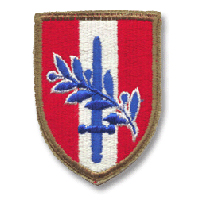If you do NOT see the Table of Contents frame to the left of this page, then
Click here to open 'USArmyGermany' frameset |
USFA Special Troops
U.S. Forces, Austria
Looking for more information from military/civilian
personnel assigned to or associated with the U.S. Forces, Austria from 1945 to 1955. If you have any
stories or thoughts on the subject, please contact me . .
|
|
|
|
|
| |
| Special Troops
History |
| |
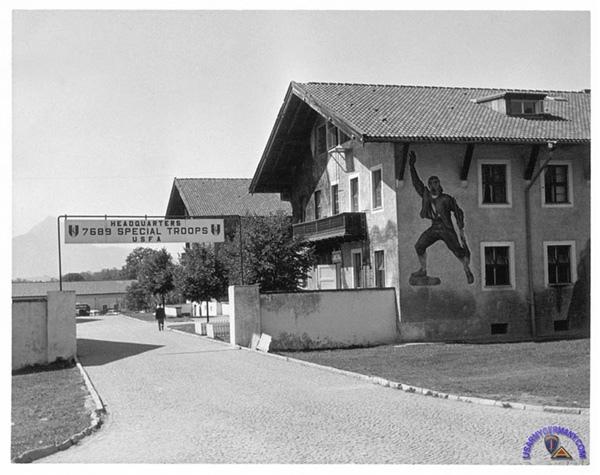
HQ USFA Special Troops, Camp Truscott, 1952 |
|
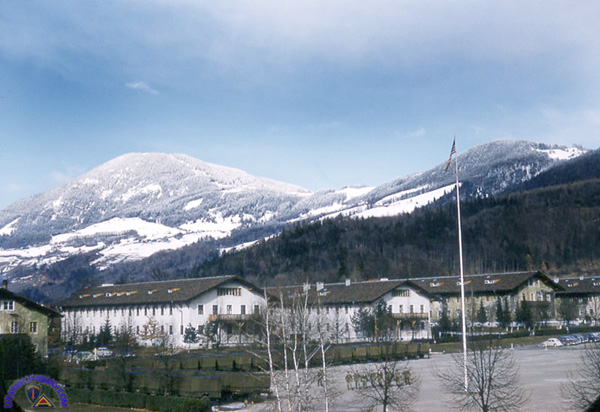
Camp Truscott, 1950s (Herbert Williamson) |
| |
| 1948 |
| (Source: STARS & STRIPES, February 11, 1948) |
USFA HQ has announced that the Vienna Area Command and USFA Special Troops will merge to form a new command designated as Headquarters Command, USFA. The consolidation will become effective on February 15.
Brig General Alexander O. Gorder, currently CG of the Vienna Area Command, will become the CG of HQ Comd, USFA. All troop units in Vienna will be placed under the administrative control of the new command. |
|
| |
| 1953 |
| (Source: "Orientation Talks", HQ USFA briefing pamphlet, July 1953) |
Hq Special Troops acts as an administrative headquarters for a variety of units which are under the operational control of the Tech Service Chiefs, in addition to its normal mission of furnishing support to Headquarters USFA. These support units include the 10th MRU, the 40th (sic) and 149th Army Bands, the 576th Car Company and the 7689 Headquarters Company.
The 63rd Signal Battalion, 69th Engineer Topographic Company, 430th CIC Detachment, 533rd MIS Battalion, 102nd Traffic Regulation Company and a number of small technical detachments are assigned to Special Troops for administration but are under technical supervision and operational control of the respective technical services or, in the case of intelligence units, the operational control of Assistant Chief of Staff, G-2. |
|
 |
|
| |
| 7689 Hq & Hq Company, USFA |
|
| (Source: Email from George F. Rodts) |
Thanks for the photo - it brings back many good memories.
My experience: I spent Xmas 1953 on a troop ship in the Atlantic. After processing at Livorno (Leghorn), I boarded a train bound for Austria. We got stuck in the Brenner Pass because of an avalanche and were without heat or food for 3 days. Arriving late at night in Salzburg, the mess hall was opened for us, and I was assigned to 7689 HQ at Camp Truscott.
My duty was at G-2 with an MOS Intelligence Analyst and rank of Sergeant, but since I was filling a Major's position, I ate in the General's Mess and had a staff car available. The G-2 was Colonel Chandler (a survivor of the Bataan Death March) and he kept me busy with frequent assignments to Vienna, and incidents on the Czech & Hungarian borders.
In July 1955, I took an Overseas Separation from active duty and was immediately hired as a civilian in the 430th CIC unit until the Austrian Peace Treaty.
Then I went to USAREUR G-2 in Heidelberg and as a civilian worked with the 10th Military Intelligence Group until half of the staff was eliminated under the Eisenhower military cut-backs. I came home in June 1956.
I hope this is of interest to you, and the other USFA Vets, of which I am proud to be a member.
|
|
 |
|
| |
| 10th Machine Records Unit |
|
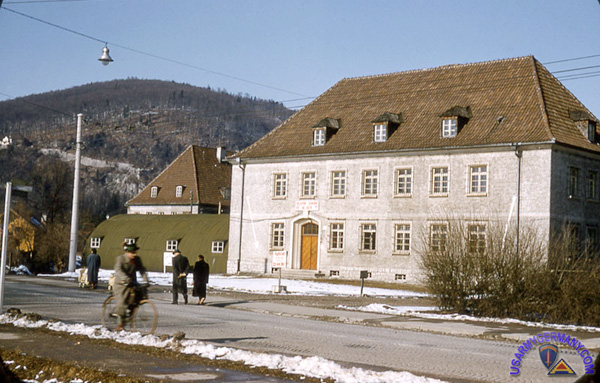
USFA AG Division (bldg) and 10th Machine Records Unit (quonset hut), Salzburg, 1950s |
|
|
| (Source: Email from Herb Williamson) |
The 10th Machine Records Unit (MRU) was one of the support units under USFA Special Troops.
The 10th Machine Records Unit (MRU) was attached to the 7689th Headquarters Headquarters Company at Camp Truscott for rations quarters and subsistence. Camp Truscott was located off the Alpenstrasse, two km outside of Salzburg. We had among other facilities, a field hospital, mess hall, PX and movie theater.
The 10th MRU was housed in a Quonset hut attached to the Adjutant General Corps Headquarters Building located on the Alpenstrasse at the edge of the City of Salzburg. The Quonset hut contained the administration and data processing equipment of the 10th MRU. In a separate shed there were two diesel generators that provided the electrical requirements of the IBM Machines.
The commanding officer of the 10th MRU was a major with a warrant officer and lieutenant. There were several noncommissioned officers and other enlisted men assigned. They were responsible for processing Morning Reports, Strength Projection Reports, and Table of Authorized Equipment (TO&E) for the USFA. We worked two shifts, working extra hours when required to complete reports. |
|
| |
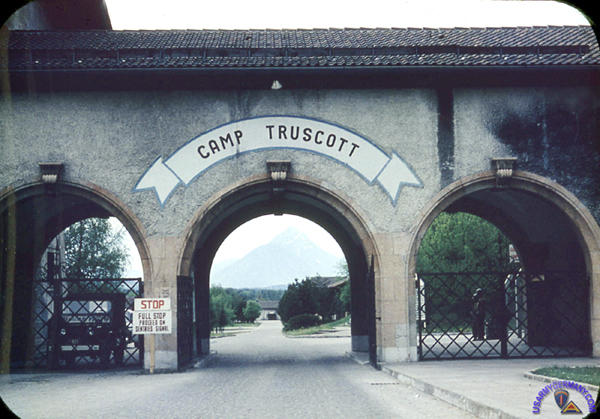
Main gate, Camp Truscott, Salzburg, 1950s |
|
| |
|
|
|
|
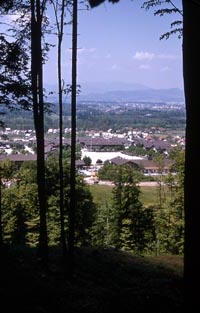
1. Camp Truscott, 1954
|
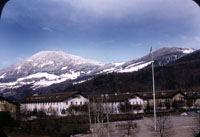
2. Parade field, Gaisberg in background
|
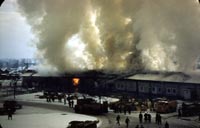
3. Fire next to movie theater |
|
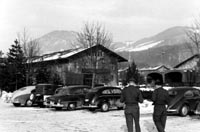
4. Leaving the snack bar
|
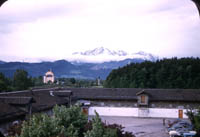
5. Hallein snack bar
|
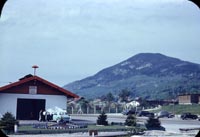
6. Truscott fire station |
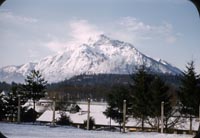
7. Untersberg and DP camp |
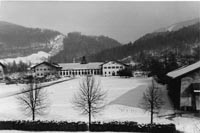
8. Mess hall
|
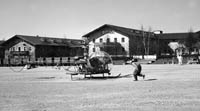
9. H-13 evac helo
|
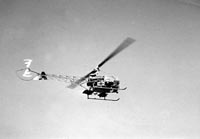
10. H-13 in route |
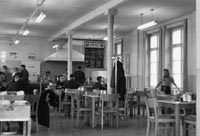
11. Snack bar |
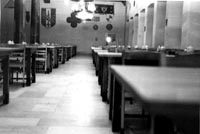
12. Mess hall before
|
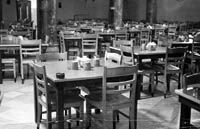
13. Mess hall afterwards
|
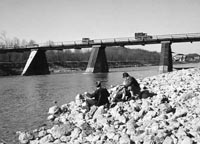
14. Bridge over Salzach River |
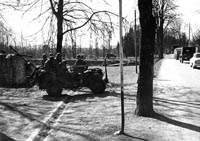
15. Soldiers of the 350th Inf Regt guard a bridge |
| |
|
|
|
|
For additional photos and details on Electrical Accounting Machines used by Machine Records Units in the 1940s-50s, see special page on the The Patton Society web site.
|
|
|
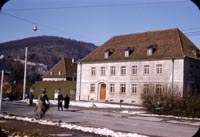
1. AGC headquarters and 10th MRU
|
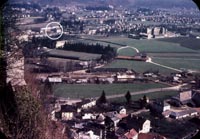
2. Location of 10th MRU
|
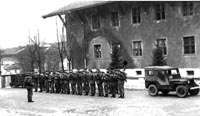
3. Weekly training |
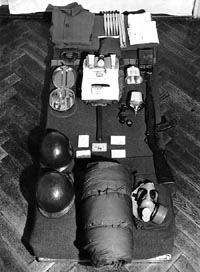
4. Field equipment |
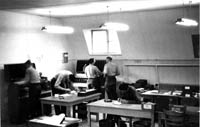
5. 10th MRU office |
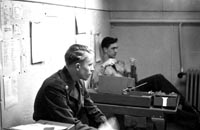
6. Keypunch stations |
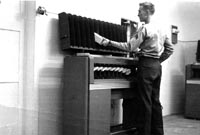
7. Sorter |
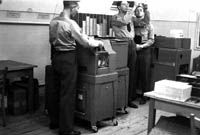
8. Collator |
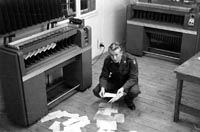
9. '52 pick-up' |
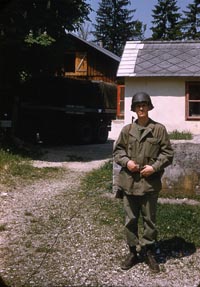
10. Herb at firing range |
|
|
| |
|
|
|
Off duty
Salzburg
|
|
|
|
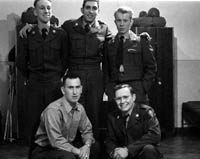
1. Roommates
|
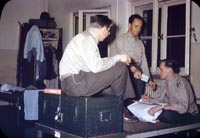
2. Members of the 10th MRU
|
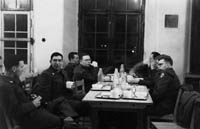
3. Night shift at the mess hall |
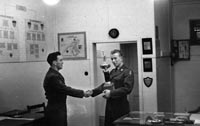
4. Volleyball champs |
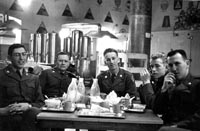
5. Midnight chow |
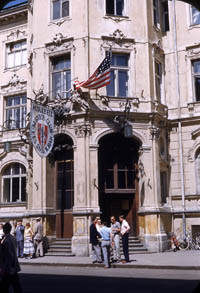
6. Mirabell Service Club |
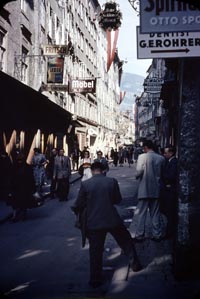
7. Getreidegasse |
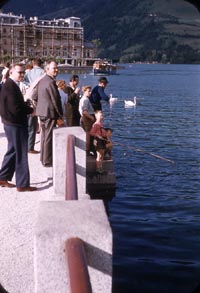
8. Zell am See |
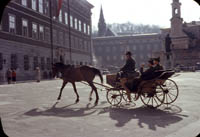
9. Mozartplatz
|
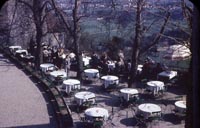
10. Hohensalzburg, outdoor cafe
|
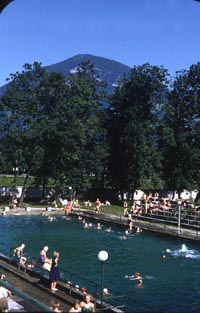
11. Public swimming pool
|
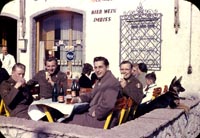
12. Gasthaus |
| |
|
|
|
R&R
Berchtesgaden
|
|
|
|
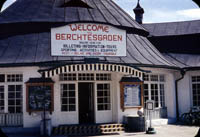
1. Leave and Rest Center
|
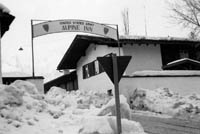
2. Alpine Inn
|
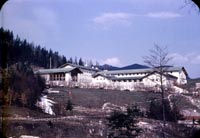
3. General Walker Hotel |
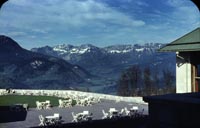
4. Alpine view, terrace of the Gen Walker Hotel |
|
 |
|
| |
| 49th Army Band |
|
| 1951 |
| (Source: STARS & STRIPES, December 13, 1951) |
The 49th Army Band just completed its 24th concert for the year at the Salzburg Festspielhaus. The band played marches, jazz, symphonic and novelty music during two-hour concert in front of a capacity crown of some 1,800 Austrians. The band was directed by its two conductors: CWO Peter A. Parkinson and WOJG Raymond Snow.
The tour was a suggestion made by Lt Gen S. Leroy Orwin, USFA CG. More than 35,000 Austrians attanded the 24 concerts. |
|
|
| 1953 |
| (Source: STARS & STRIPES, Sept 19, 1953) |
| CWO Leslie Y. Harkness recently arrived in USFA to assume command of the combined 49th and 149th Army Bands. |
|
|
| 1954 |
| (Source: STARS & STRIPES, July 25, 1954) |
The USFA Band, located at Salzburg, is actually comprised of two separate bands: the 49th and the 149th. Although they are two separate TO&E organizations, they always play together. Neither band has ever played alone.
CWO Leslie Y. Harkness directs the 49th Army Band; CWO Walter L. Cook directs the 149th Army Band. Each band currently has a 28-man maximum.
The main mission of the combined band is to play at the Changing of the Guard ceremony in Vienna. Every four months the Americans take over control of the heart of Vienna from the Soviets. After a month, they then hand over control to the British. At the first changeover, the band performs at a ceremony with the Soviet band. At thes second ceremony, the band performs with the British band.
The changeover ceremony with the Russians is very competitive.
|
|
|
| 1955 |
| (Source: STARS & STRIPES, Nov 24, 1955) |
| Based on information found in a brief article about the 49th Army Band, the band moved to Leghorn after US forces pulled out of Austria in late 1955. |
 |
|
| |
| 202nd Military Police Company (Honor Guard) |
|
| |
| |
| |
| |
 |
|
|
Related Links:
|
| |
| |


